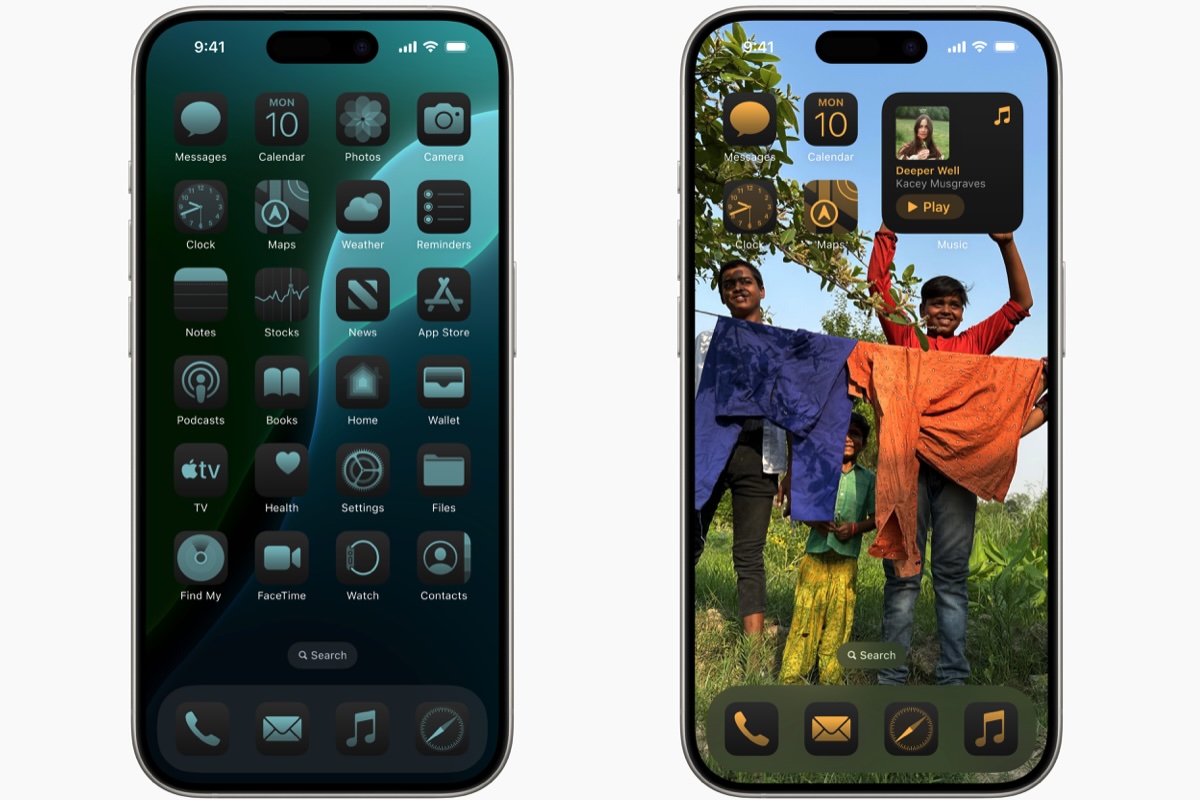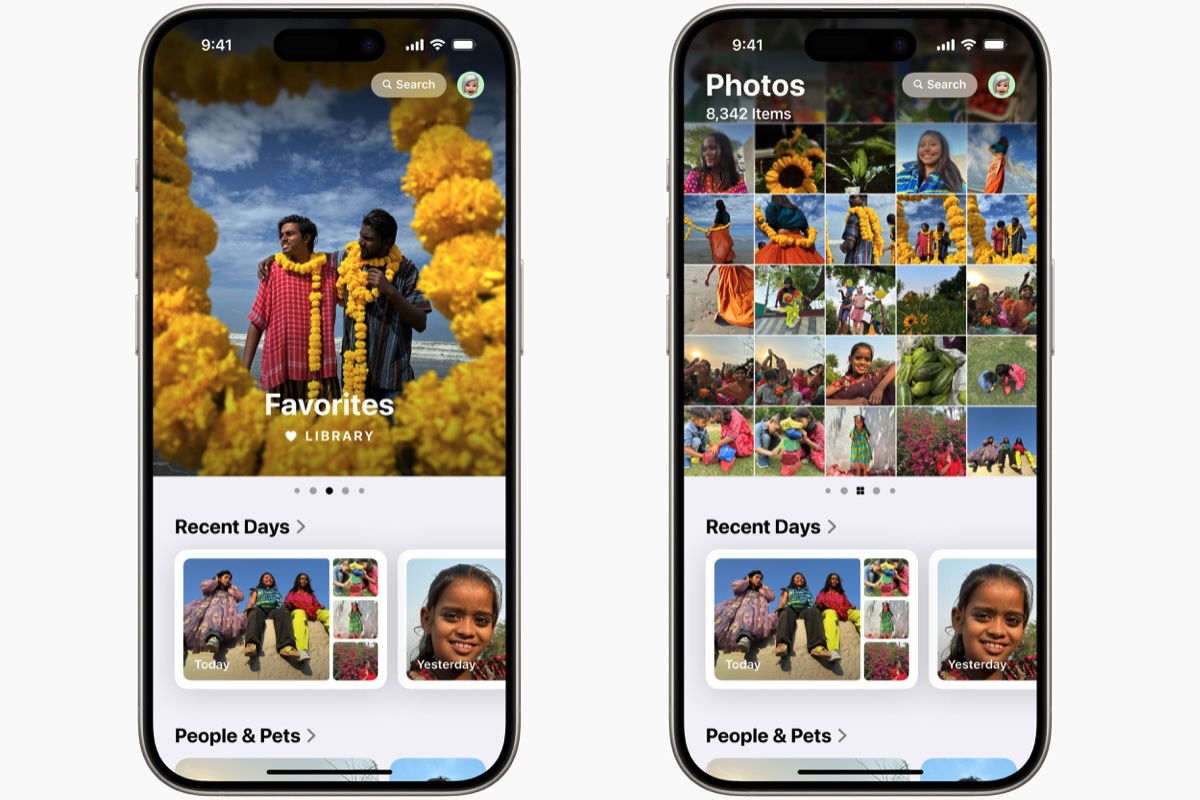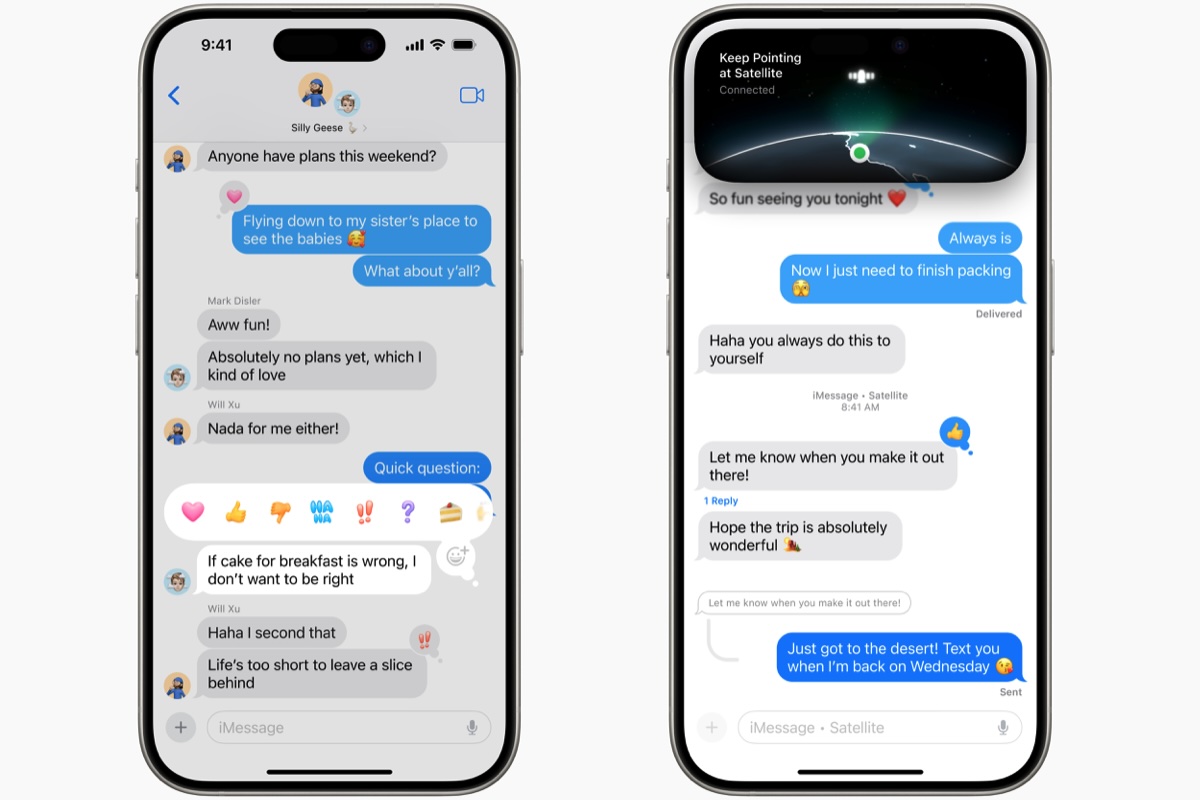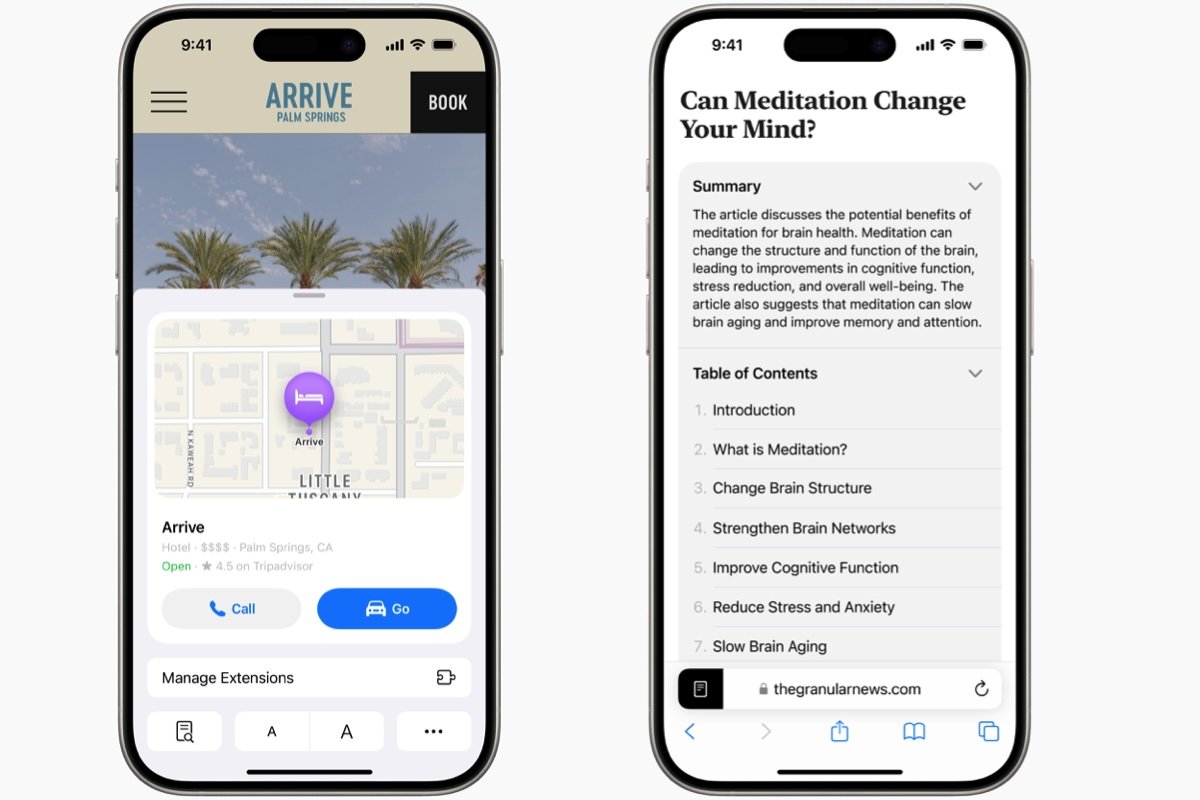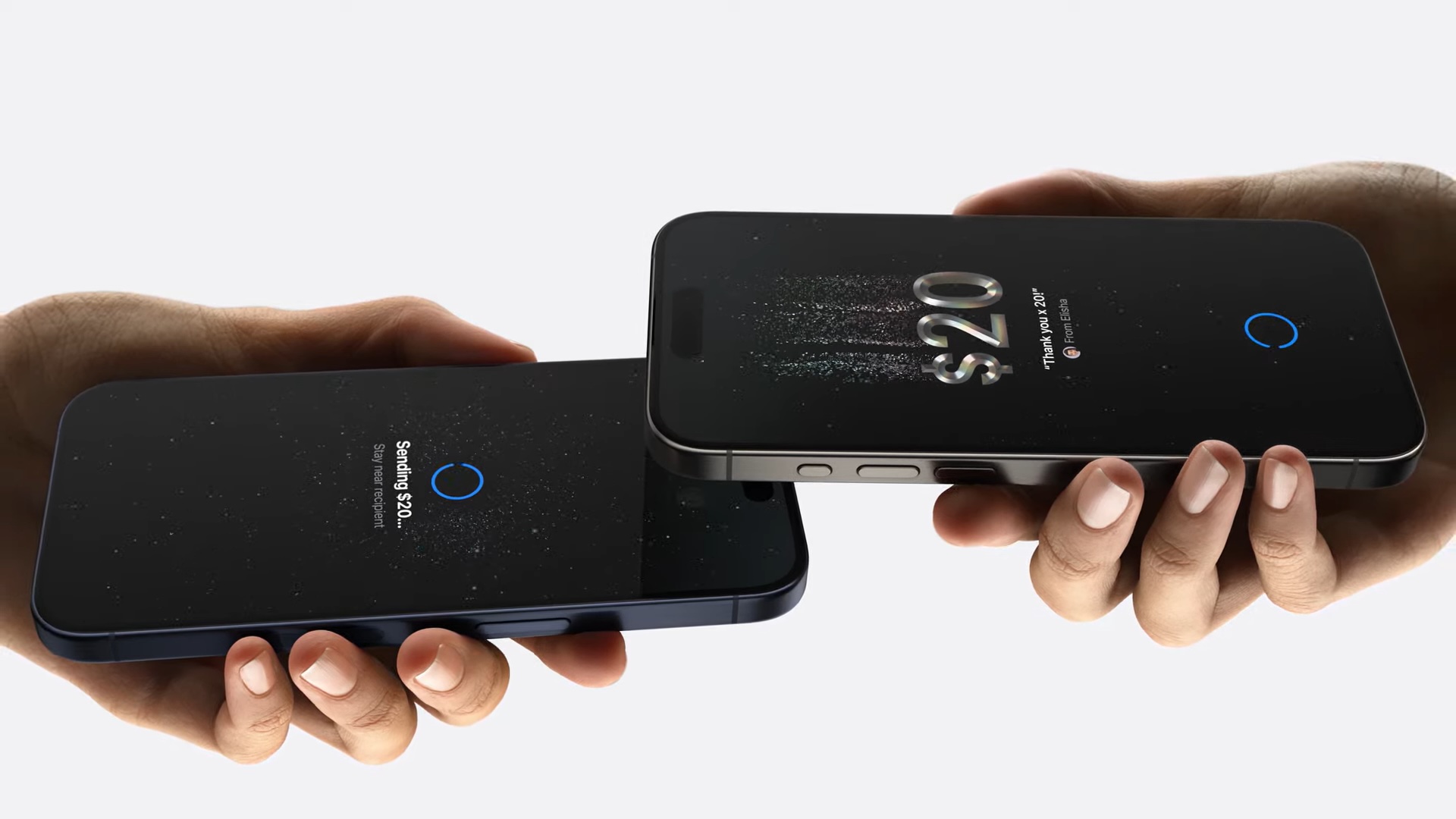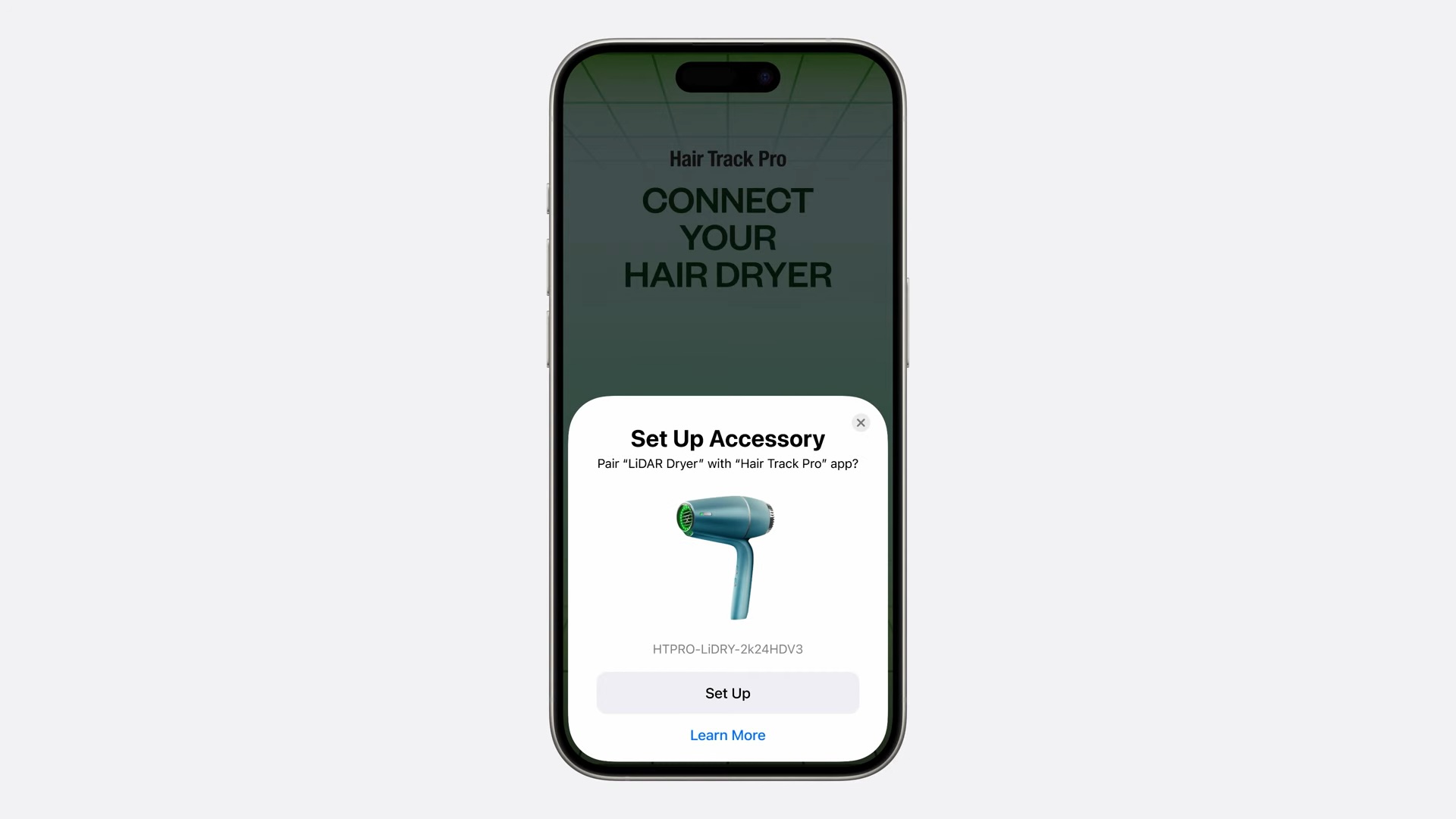Even if you’re not planning to buy one of the new iPhones, your existing iPhone (XR and later) could be getting a bunch of new features later today (Monday, September 16) at around 10 a.m. PT, 1 p.m. ET, and 6 p.m. BST with the release of iOS 18.
Apple has already unveiled the new iPhone features coming in iOS 18. Among them are a redesigned Photos app, new ways to customize your Home screen and wallpaper, new Messages reactions, privacy-related features and dozens of other smaller changes. There will also be some AI features, dubbed Apple Intelligence coming to some iPhones (find out if they’ll be on your iPhone below).
This free software update will bring interface tweaks, bug fixes, and new features. It will be like getting a new iPhone without paying a penny. In this article, we discuss everything you need to know about iOS 18, including when iOS 18 is coming out, which iPhones will be able to run iOS 18, the features that are coming in the new OS, and the ones that won’t be ready in time for the launch of iOS 18.
We also have information about the beta program including the latest version of the pubic and developer betas.
iOS 18 release date – What time does iOS 18 come out?
- Launching: Monday, September 16
- At: 10 a.m. PT, 1 p.m. ET, and 6 p.m. BST (expected)
iOS 18 will arrive on Monday, September 16, keeping in line with previous releases. Usually, a iOS update arrives at about 10 a.m. PT, 1 p.m. ET, and 6 p.m. BST, so we expect that iOS 18 will arrive at around that time.
Expect early downloads to be slow because it’s not only iOS 18 that will be available to download from Apple’s servers – macOS Sequoia, watchOS and iPadOS 18 will also be available at around the same time.
Over the past several years, the release of the new version of iOS has been fairly consistent, usually falling on the Monday following Apple’s iPhone launch event:
- iOS 18: Monday, September 16, 2024
- iOS 17: Monday, September 18, 2023
- iOS 16: Monday, September 12, 2022
- iOS 15: Monday, September 20, 2021
- iOS 14: Wednesday, September 16, 2020
- iOS 13: Thursday, September 19, 2019
- iOS 12: Monday, September 17, 2018
iOS 18 release date – How to install
Once the final release comes out, installing iOS 18 will be a breeze. Just open the Settings app on your iPhone and go to General > Software Update; iOS will check for any available updates and guide you through the process of installing them. You simply have to follow the instructions, which we explain in our iOS updating guide. And it’s easier still if you’ve turned on Automatic Updates, which you can do from the same screen.
A little work preparing your iPhone before installing the update can help avoid problems. We advise you follow these steps:
- Back up your iPhone: Back up before installing the new version and you will always be able to recover your iPhone with the older version of iOS running on it should things go wrong. Read: How to downgrade an iPhone.
- Make space on your iPhone: If your iPhone doesn’t have a lot of available space internally we recommend having a bit of a tidy-up so you can reclaim some iPhone storage. Simple ways to do this could include deleting apps you don’t use, deleting old Notes, Messages, and duplicated photos.
- Update your iPhone to the latest version: Don’t skip an update and go straight to iOS 18. If you haven’t installed iOS 17.6.1 yet do so now.
iOS 18 compatibility: Which iPhones get iOS 18?
The following iPhones get support for iOS 18, the same lineup of supported devices as iOS 17.
- iPhone 15, iPhone 15 Plus, Pro, Pro Max
- iPhone 14, iPhone 14 Plus, Pro, Pro Max
- iPhone 13, iPhone 13 mini, Pro, Pro Max
- iPhone 12, iPhone 12 mini, Pro, Pro Max
- iPhone 11, iPhone 11 Pro, Pro Max
- iPhone XS, iPhone XS Max
- iPhone XR
- iPhone SE (2nd gen or later)
Read: iOS 18 compatibility: Which iPhones support iOS 18 and iOS compatibility checker
Some of the new features will not be supported on the older phones, because they lack the hardware necessary (a powerful enough Neural Engine or GPU to run AI stuff, or enough RAM). This is typical of new iOS releases. In 2022, for example, the iPhone 8 and iPhone X missed out on a bunch of cool stuff due to their older processor. It is no surprise, therefore, that the hardware requirements are steep for the AI-related features aka ‘Apple Intelligence’—iPhone 15 Pro or later.
Like iOS 17, iOS 18 does not support iPhone 8 or the iPhone X which came out in 2017, but since those phones are able to run iOS 16, they will continue to get support through security updates for at least another year. With the release of iOS 18 though, Apple may stop supporting iOS 15, which will mean that iPhone 7, 7 Plus, iPhone 6S, 6S Plus, and iPhone SE (1st generation) will no longer get support. Generally, Apple has provided software updates for the past two versions of iOS. See: How long does Apple support iPhones.
iOS 18: Should I install iOS 18 on my iPhone?
As long as your iPhone can run it, we recommend updating to iOS 18. The new features–all of which we discuss below–look enticing enough. We address how How iOS 17 and iOS 18 compare separetly.
However, we do recommend you wait a week or more so that any issues with the early release can be addressed: despite the beta program, there are often issues once the software update gets installed on mass-market iPhones. It’s also wise not to be one of the first downloaders because the download will likely take a lot longer if you try soon after it becomes available.
iOS 18 beta: Latest version
Apple’s beta testing program for developers and public testers has been running since June/July and will continue beyond the launch of iOS 18 to the general public. There is also a separate iOS 18 Sequoia 15.1 beta that includes Apple Intelligence features. Below you can find information about the latest beta versions and how to install them.
If you want to run the developer beta, you need to be a registered Apple software developer, which has both free and paid ($99/£79) versions. We explain How to join Apple’s beta program separately. Since June 2023 Apple has opened the beta testing program to all registered developers–so now everyone can get the earliest possible access to the iOS beta without paying Apple. Developer betas can be risky though, so as an alternative, anyone can sign up for the Public Beta, which should be more stable than the developer beta. Beware though: whether a public beta or a developer beta, any beta software is not as stable as the final version and the iOS and your apps may not work properly. Read Should you install the iOS 18 beta? for advice. Rather than installing the developer beta we recommend that you should install the public beta to avoid too many complications.
Once registered, when you go to Settings > General > Software Update on your Mac, you’ll see a new tab for Beta Updates, which will list the version of the beta you’re running. For example, if you want to install the developer beta select iOS 18 Developer Beta, alternatively, if it’s the public beta you want, select iOS 18 Public Beta. If you need help installing the developer or public betas read our How to get the iOS beta article. If you then want to uninstall it, we have a guide for that: How to remove the iOS beta.
Latest beta
- iOS 18 developer RC – latest version released September 9
- iOS 18 public beta RC – latest public beta released September 9
- iOS 18.1 beta 3 – developer beta released August 28
Apple began the beta program soon after it revealed the details of iOS 18 at WWDC. The developer beta is available for anyone who wants to run the beta, but it should be noted betas–especially developer betas–are likely to be buggy, so we don’t recommend installing it on a primary device.
Apple started parallel development of iOS 18.1 on July 29 with the release of the iOS 18.1 beta to developers with supported hardware (iPhone 15 Pro and Pro Max). This version includes Apple Intelligence features which won’t be available in the initial launch of iOS 18. See: Everything Apple Intelligence can (and can’t) do in iOS 18.1.
As a result, there are multiple versions of the iOS 18 beta: A developer beta of iOS 18, a developer beta of iOS 18.1, and a public beta of iOS 18, but not of iOS 18.1.
If you’d like to join the beta for the next version of iOS read how to join Apple’s beta program and try out new software. If you want to remove the beta from your device read this: How to remove an iOS beta from your iPhone.
iOS 18 features: The new features coming in iOS 18
There were many new features in iOS 17 including a new app called Journal, Live Voicemail, and a new way to use Stickers, among dozens of other smaller changes. Rumors suggested that iOS 18 would be “one of the biggest iOS updates — if not the biggest — in the company’s history.” As expected, in iOS 28 Apple will include some major new AI features, dubbed Apple Intelligence, although these features will only be available on iPhone 15 Pro and Pro Max and newer iPhones.
Not all the new features will be available at launch. The first Apple Intelligence AI features will be introduced in iOS 18.1. Other features, such as the new categories in Mail, will come “later this year” in a subsequent software update. Read: These features will be missing when iOS 18 launches this fall.
Customization
There will be a more customizable Home Screen, Lock Screen, and Control Center in iOS 18.
Several reports had claimed that Apple would allow greater personalization of the Home screen, including allowing users to place icons anywhere on the grid, allowing spaces between them. Prior to iOS 18 icons can be reordered or put into folders, but always fill the screen from left to right and top to bottom.
In iOS 18 users will be able to arrange apps and widgets anywhere on the Home Screen, including right above the dock or framing a wallpaper. It will even be possible to change the lock screen icons or remove them.
In addition, App icons and widgets can have a dark or tinted effect to blend in. Read: iOS 18: How to change the color of the app icons on your home screen and How to put app icons, widgets, and folders anywhere you want as well as iOS 18: How to make your app icons large and label-free.
This “put icons wherever you want” feature is something we’ve wanted from Apple for many years, and has been a staple of many Android phones seemingly forever.
The Control Centre is getting a redesign to give easier access to a user’s most-utilized controls. Users will also be able to add controls from supported third-party apps into Control Center.
Is it enough? Read: Apple is finally letting you have it your way–kinda and You can finally customize your iPhone like Android–here’s everything you can do.
Apple
Photos
New features in Photos will help users find their photos and keep big libraries organized. It’s the biggest redesign of Photos ever and is intended to help users find photos fast. It will be simplified but still familiar, according to Apple and will include a new Unified View, new Collections, and customization features.
Users will be able to filter out clutter to narrow down to specific types of content. It will be possible to browse by topics, time, people, memories, trips, Recent Days and People and Pets.
A new carousel view will present highlights that update each day – featuring favorite people, pets, and places.
Apple
Messages
Messages will gain new ways to express yourself. Expect improvements to text formatting and fun new text effects. Tapbacks are getting redesigned and will let you tap back with any emoji or sticker. You’ll also be able to amplify and animate letters, word, phrases, and emoji, and add formatting like bold, underline, italics, and strikethrough.
You will also be able to schedule a message to send later.
Messages will also support RCS for more reliable group messaging with those who do not have an Apple device. Read about how your conversations with Android users will look in iOS 18 and RCS on iPhone with iOS 18: Every question answered.
Apple is also making it possible to send Messages via Satellite so you can text when off the grid from Messages app. iMessages sent over satellite are encrypted.
Apple
Mail will help you manage incoming email better with new on-device categorization. As email arrives it will be sorted into Primary (personal and time-sensitive), Transactions (confirmations and receipts), Updates (news and social notifications), and Promotions (marketing and coupons).
A new Digest will pull together all relevant emails from a business, so for example, it could bring all flight information together.
The Mail Categorization features will be available later this year.
Safari
A new Highlights feature is designed to make it easier to discover information on the web.
A redesigned Reader experience will use machine learning to surface key information on a webpage so that users can review a summary to get the gist of an article. A table of contents will be included for longer articles
Apple says users will also be able to quickly see the location of a restaurant, hotel, or landmark; or listen to an artist’s track right from an article about the song or album.
You will also be able to snap away annoying ads.
Apple
Wallet and Apple Pay
There will be new ways to pay with Apple Pay. Users can send and receive Apple Cash by holding two iPhones together: Tap to Cash will let you share cash without exchanging email or number.
Tickets in Apple Wallet including key event information like an event guide with info about the venue, and recommended Apple Music playlists
Apple
iPhone mirroring on the Mac
iPhone Mirroring will grant users access to their iPhone via their Mac. It will be possible to see notifications from the iPhone on the Mac, and drag and drop files between the devices.
Read: How iPhone Mirroring lets you access your iPhone on your Mac in macOS Sequoia.
Other app updates:
- Journal – New features to help you keep track of goals, Insights view, calendar, writing streak, and actually search
- Maps – New topographic maps with trails (US national parks only)
- Game Mode – Will minimize background activity for the best frame rates
- Notes app – formulas and equations entered while typing will be solved
- Calendar – incorporates tasks from Reminders and a new monthly view
- Health app – Medical ID redesigned
- Emergency SOS Live Video
- Home app – guest access
- Accessibility – Eye Tracking
- iCloud – Apple is adding a “Keep Downloaded” option that prevents the file from being moved to iCloud and keeps the file on the device. Read about the new Keep Downloaded option.
Apple didn’t discuss everything at WWDC. There were a number of features that didn’t make the WWDC keynote.
Also see: Unannounced iOS 18 tweak lets you see the time even when your iPhone is dead.
Privacy features
iOS 18 will improve privacy. You will be able to control who can see your apps, which contacts you share with that app, and which accessories apps can connect to.
You can also control whether others can view your apps on your iPhone by locking an app so it won’t open without Face ID or a passcode. A new locked hidden apps folder is also coming with iOS 18.
Developers will have a way to seamlessly connect third-party accessories with iPhones without letting an app see all the other devices on a user’s network.
Apple
Apple Intelligence
Apple’s new artificial intelligence system is coming to iPhone, Mac, and iPad with iOS 18, macOS Sequoia, and iPadOS 18. Apple Intelligence will only be supported by iPhone 15 Pro and iPhone 15 Pro Max though. (Here’s why you’ll need to upgrade your iPhone to get Apple Intelligence, also read: Here’s why newer iPhones and Vision Pro can’t run Apple Intelligence).
The hardware requirements are steep—iPhone 15 Pro or later. iPads will need at least an M1 chip or later as will Macs. Apple Intelligence features will mostly be processed on the device, which is different from other platforms where AI processing is done in the cloud. But Apple Intelligence will be able to determine if cloud processing is needed and will use it when appropriate.
Apple Intelligence features include the following:
Writing – Apple Intelligence will help users enhance their writing and communications. Writing Tools are built in systemwide that will offer to rewrite, proofread, and summarize text in writing focused apps such as Mail, Notes, Pages, and third-party apps.
Images – New image capabilities will also come to M-series Macs. In Image Playground users will be able to create images in three styles: Animation, Illustration, or Sketch.
Photos – A new Memories in Photos feature will create a video from photos and videos based on a description provided by the user. Apple Intelligence will pick out the photos and videos, develop a storyline based on the photos, and arrange them into a movie. In addition, a new Clean Up tool will identify and remove unwanted objects from the background of a photo.
Read: Apple Intelligence FAQ: What it is, what it does, and when you’ll get it and Apple Intelligence is a gradual rollout—here’s what you’ll get, and when.
Siri
Siri is also getting some AI updates and ChatGPT is to be integrated into Siri. Because some queries will be handled off-device Apple is introducing Private Cloud Compute so that when data is sent to server-based models for processing it is not stored or made accessible to Apple.
One of the simplest changes to Siri is that it will be easier to type to Siri rather than having to speak to the on-device assistant. Apple may have finally twigged that people don’t always want to talk to their phones.
The new Siri is said to be more “conversational” and natural, with features that “help users in their day-to-day lives.”
A new smart responses framework will help Siri take into account your own personal details in its replies: like people, companies, calendar events, locations, dates, and more.
Later this year, Siri is said to get cross-device media control. So you can talk to Siri on one of your devices to control media playback on another.
In an update scheduled for early 2025, Siri is said to gain the ability to control nearly any app, with hundreds of possible commands. This feature will start off with single commands for Apple’s own apps and grow to include third-party apps and commands with multiple steps. In addition, Siri will be able to react to and take actions based on what is on your screen. This is said to go into beta for developers in January, with a rollout to users in iOS 18.4 in the spring.
New accessibility features
Apple is planning several new accessibility features for iOS 18, including Adaptive Voice Shortcuts, which will let users turn on or off specific accessibility features using a custom phrase, and Live Speech, which lets users type what they want to say and have it read out loud on phone calls or video meetings, will get the ability to add saved phrases to categories.
Features coming after the iOS 18 release
Some iOS 18 features won’t be a part of the initial release. Rather, they will be released later in 2024 or in 2025 as part of an iOS 18 point release (iOS 18.2 or iOS 18.4, for example).
Here are some of the more significant features we expect to come later in an iOS 18 update:
Mail app features – Auto-categorizing of mail, mail digests, and summaries in your inbox are all features expected later in 2024.
Home support for robot vacuums – The Home app won’t be able to start or stop your Roomba until later in 2024.
Drag and Drop between iPhone and Mac – You’ll be able to see and control your iPhone on your Mac when iOS 18 and macOS 15 are released, but drag-and-drop support between your Mac and iPhone will come in an update.
ChatGPT integration – The ability to call upon ChatGPT when using Apple’s AI tools will likely come later in 2024.
Advanced Siri features – Siri features like its ability to see and react to what is on your display, semantic indexing (where Siri knows and uses information from across Messages, Mail, Contacts, and more), and advanced control over apps is all coming in 2025.
Vehicle Motion Cues in iOS 18 will help reduce motion sickness.
Third-party NFC transactions – Apple will allow third-party NFC transactions beginning with iOS 18.1–by request.
In addition, all of the Apple Intelligence features will initially support only American English, and may be limited to only some regions. Additional languages and regions are likely to be available through 2025 and beyond.
Next version of iOS
We know that the next version of iOS after Apple finishes development of iOS 18 will be iOS 19. But what next in terms of software? Expect even more Apple Intelligence features to come in the late 2025 update to iOS and expect that iOS, iPadOS and macOS will be closer than ever.
Source : Macworld



